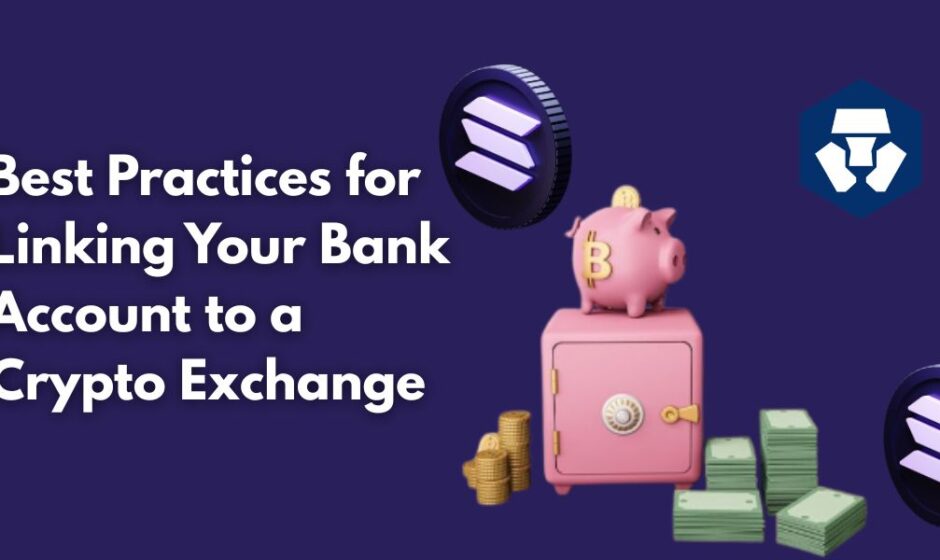Linking your bank account to a crypto exchange is an essential step in funding your wallet and participating in the digital asset economy. While the process is usually straightforward, mistakes or oversights can result in delays, rejected payments, or even frozen accounts.
To help you link your account securely and without hassles, here are the best practices every crypto user should follow.
1. Use a Crypto-Friendly Bank
Not all banks support transactions to or from crypto exchanges. Some institutions automatically block such transactions, considering them high-risk.
What to do:
-
Research banks known for crypto support (e.g., Ally Bank, Revolut, or Silvergate).
-
Avoid using banks with strict anti-crypto policies to prevent rejected transfers or account restrictions.
-
If your transfer fails, and you’re using a platform like Crypto.com, this could explain issues like crypto com ACH not working, which often stem from incompatible banks.
2. Match Account Names Precisely
For security reasons, the name on your bank account must match the name on your crypto exchange account. Any mismatch could lead to:
-
Delayed deposits
-
Rejected withdrawals
-
Compliance holds
Always ensure your bank account and exchange profile are registered under the same legal name.
3. Complete All KYC Verification First
Most exchanges require Know Your Customer (KYC) verification before allowing bank account linking. Skipping this step may restrict your account from making or receiving fiat payments.
Ensure you’ve submitted:
-
A government-issued ID
-
Proof of address (in some cases)
-
A clear selfie or biometric verification
Once verified, you’ll gain full access to bank-related features and higher transaction limits.
4. Start with a Small Test Transaction
Once your account is linked, it’s wise to test the connection with a small deposit or withdrawal. This ensures everything is set up correctly and helps you catch any errors early.
A small test deposit also helps verify:
-
The account linkage
-
Transfer speeds
-
Whether fees are applied as expected
5. Use ACH or Wire Transfers According to Your Needs
Choose the right method for your goals:
-
ACH transfers are low-cost and good for regular, smaller transactions, though they can be slower.
-
Wire transfers are faster for large amounts but come with higher fees.
Always check the exchange’s processing times and any daily or monthly limits for each method.
6. Secure Your Accounts with 2FA
To protect your funds, enable Two-Factor Authentication (2FA) on both your crypto exchange and bank accounts. This adds a layer of security in case your login credentials are compromised.
Also, avoid linking your accounts on public Wi-Fi or unsecured devices to minimize exposure to cyber threats.
7. Keep Customer Support Contact Handy
Despite best practices, issues can still arise—especially during your first few transactions. It’s essential to know how to get help quickly.
If you experience transfer delays, deposit errors, or verification failures, contacting the crypto com support number (or your respective platform’s help desk) can resolve the problem faster than waiting for an email reply.
Conclusion
Linking your bank account to a crypto exchange is a foundational step in your crypto journey. By following these best practices—choosing the right bank, verifying your identity, starting small, and securing your accounts—you can minimize risks and ensure smooth, successful transactions. Taking the time to do it right sets you up for confident and seamless trading in the world of digital assets.
Frequently Asked Questions (FAQs)
1. What should I do if my bank rejects a transfer to a crypto exchange?
If your bank declines the transaction, it may have restrictions on crypto-related activity. Contact your bank to inquire about their policy, or consider switching to a crypto-friendly institution that supports such transactions.
2. Can I link a joint or business bank account to my crypto exchange profile?
Most exchanges require that the bank account name match the name on your exchange profile. Joint or business accounts may not be accepted unless explicitly supported. Always check your platform’s guidelines before linking.
3. How long does it take to verify my bank account on a crypto exchange?
Verification times vary by platform. ACH account links typically take 1–3 business days, while wire transfer setups may be faster. Completing your KYC in advance can speed up the process.
4. Is it safe to link my bank account to a crypto platform?
Yes, as long as you’re using a reputable, regulated exchange with strong security measures like encryption and 2FA. Always verify that the website URL is correct and avoid accessing your account over public Wi-Fi.
5. Who do I contact if my deposit doesn’t show up after linking my bank account?
Start by checking your transaction status on both the exchange and your bank. If the issue persists, contact the exchange’s support team. For example, calling the crypto com support number can expedite resolution if you’re using that platform.
Latest News



